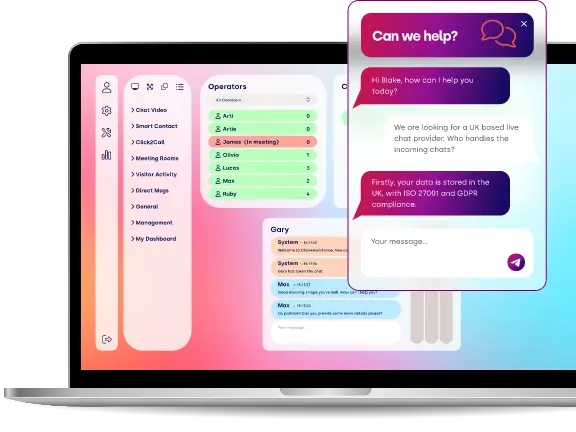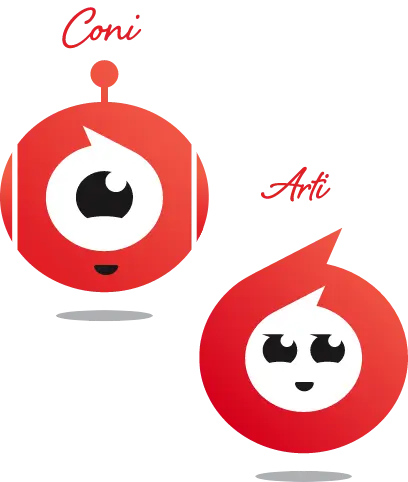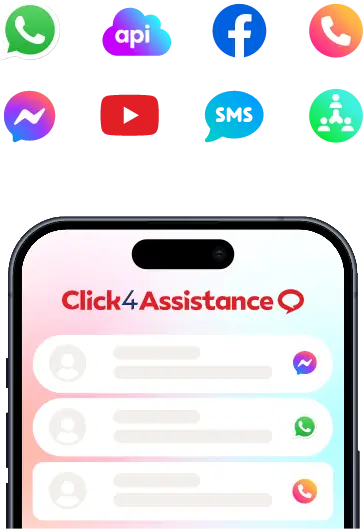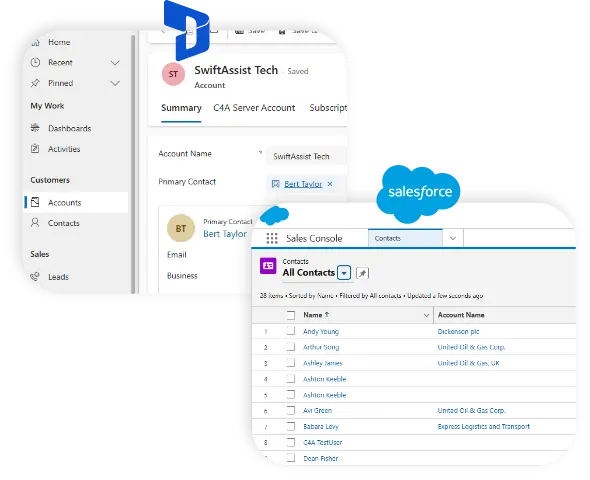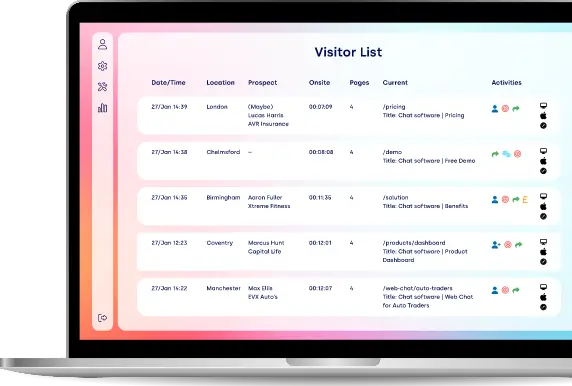Conversational AI Chatbots: Everything You Need To Know
Artificial intelligence is changing the way we interact with technology in remarkable ways. Conversational AI chatbots have grown from simple tools into smart companions.

These conversational AI assistants are popping up everywhere – on online shopping sites, in mobile apps, and even woven into social media platforms. They’re helping businesses deliver quick customer service, guiding users through online processes, and making digital interactions feel effortless. Whether it’s answering product questions, setting up appointments, or sorting out issues, they’re changing the game for how people and organisations connect.
If you’re curious about how a conversational AI chatbot works and why they’re becoming a must-have for modern businesses, you’re in the right place. They’ve grown beyond just being tools for basic Q&A—they’re learning, adapting, and getting better with every chat, providing conversations that are sharper, faster, and more human-like as time goes on. For a thorough look at how to choose the right platform, check out our guide on the best AI chatbot for business websites. And to see what’s possible in real-life situations, don’t miss these practical chatbot examples.
As Alan Turing famously asked, “Can machines think?” While today’s conversational AI chatbots don’t think exactly like we do, it’s impressively close to understanding us—picking up on context, tone, and intent with amazing accuracy. It’s no surprise that companies worldwide are jumping on this technology at lightning speed, not just because it cuts costs but also because it delivers exceptional customer experiences, drives sales, and builds loyalty in ways that traditional digital tools have never quite achieved.
What Exactly Is A Conversational AI Chatbot?
At its core, it’s an AI-powered tool designed to replicate natural human conversation in a way that feels authentic and intuitive. Unlike older systems that relied on rigid, pre-written scripts, today’s chatbots use sophisticated machine learning algorithms to understand language, interpret context, and recognise intent.
Think of a conversational AI chatbot as your ever-ready digital assistant. When you type or speak, it doesn’t just take your words literally—it understands the deeper meaning, remembers relevant context from past interactions, and delivers a response that flows naturally. For example, if you ask, “Can you help me book a flight for next Friday?” the chatbot picks up on more than just the words “book” and “flight”; it understands that you want to arrange travel for a specific date. If you then add, “Make it in the evening,” it smoothly adjusts, knowing you’re still talking about that same booking.
This level of smarts comes from training chatbots on massive amounts of text and real conversations, allowing them to recognise patterns in how people speak. Many of them use transformer-based models like GPT or BERT, which are specially designed to handle the complexities of language. These models enable the chatbot to generate unique, coherent responses that adapt to each interaction, rather than sticking to a limited set of pre-written replies.
Read further on how transformer models enhance chatbot interactions.
The result? Conversations that feel less robotic and more like chatting with a well-trained human assistant—one that remembers your preferences, adjusts to your style of communication, and gets better with every exchange.
What Are the Core Components of a Conversational AI Chatbot?
A conversational AI chatbot isn’t just a standalone piece of software; it’s a blend of advanced technologies working together to create natural conversations. Each component plays a vital role in crafting an interaction that feels smooth and human-like.
Natural Language Processing (NLP)
NLP is the foundation of it all. It allows the chatbot to transform raw text or spoken words into something a machine can actually understand. Without NLP, a chatbot would just see your words as a jumbled mess of letters.
Natural Language Understanding (NLU)
NLU takes things a step further. It figures out your intent (what you’re trying to do) and identifies entities (the specific details in your request). For example, if you say, “Find me a flight to Paris on Monday,” NLU recognises your intent to book travel and picks out the entities—Paris as your destination and Monday as your travel day.
Natural Language Generation (NLG)
This is where the magic happens in crafting responses. Instead of spitting out generic replies, NLG enables the conversational AI chatbot to create clear, relevant, and human-like answers that are tailored to your questions.
Machine Learning and Deep Learning
These technologies are like the engines that drive improvement. Every interaction with the chatbot helps it learn. Over time, it gets better at understanding slang, handling complex questions, and predicting what users want.
Dialogue Management
Imagine trying to chat with someone who forgets what you just said. That wouldn’t be very effective, right? Dialogue management solves this problem by keeping track of the conversation flow, ensuring that context is always maintained.
External Integrations
A conversational AI chatbot loses a lot of its value if it can’t connect with other systems. Integrations with APIs, databases, or CRMs allow it to pull in real-time information, whether it’s checking your bank balance, verifying stock levels, or setting up an appointment.
Where are Conversational AI Chatbots used Across Different Industries?
The beauty of conversational AI chatbots lies in their versatility. They aren’t limited to just one industry or purpose. Wherever communication plays a key role, chatbots can make a real difference. Here are some standout examples:
- Customer Support
Nobody likes waiting on hold for ages. Conversational AI chatbots tackle this problem by delivering instant responses to customer questions—anytime, day or night. Whether it’s helping with product issues, tracking orders, or resetting passwords, they handle repetitive tasks with ease. And if a question is too complex, they can seamlessly hand it off to a human agent.
- E-Commerce
Online shopping can sometimes feel overwhelming, but a conversational AI chatbot acts like your personal shopping assistant. It can suggest products, explain features, and even offer smart upsell options. Just imagine asking, “Which shoes would look great with this dress?” and getting tailored recommendations right away—that’s the magic of a chatbot at work.
- Healthcare
In the healthcare field, chatbots are becoming invaluable partners. They can help patients check symptoms, provide basic health info, and send reminders for medications or appointments. While they’re not a substitute for doctors, they lighten the load for medical staff and give patients quick access to help.
- Banking and Finance
Financial topics can be stressful, but conversational AI makes them easier to navigate. Customers can check their account balances, make transfers, and even get personalised advice from chatbots. Some banks are also using AI to spot suspicious transactions through natural conversations.
- Education
In schools and beyond, conversational AI chatbots serve as tutors. They adapt to each student’s learning pace, provide instant feedback, and enhance the overall studying experience. Imagine getting ready for a language exam and having a chatbot quiz you in real-time!
- Enterprise Productivity
In the world of business, chatbots are game-changers for productivity. They can help set up meetings, give quick access to information, and remind team members about important deadlines. By taking care of those repetitive tasks, chatbots make it easier for everyone to focus on what really matters and keep things running smoothly.
CTO, David Lang, put it: “A conversational AI chatbot is more than a tool – it’s like adding a digital colleague who handles the repetitive work so your team can focus on strategy”.
You can read this article for more examples of how conversational AI is being applied across different industries.

Powering Customer Engagement Across All Industries
From healthcare to finance, retail to education, our chat platform is designed to meet the unique needs of your UK business. It boosts customer engagement across all industries with customised solutions.
What Are The Main Advantages of Conversational AI Chatbots?
The answer is pretty straightforward. Conversational AI chatbots offer a ton of benefits that boost both the customer experience and internal efficiency. Let’s take a deep dive into the details:
- 24/7 Availability
Humans need their beauty sleep, but a conversational AI chatbot is always on duty. It’s there for you at any hour, ready to tackle questions at 3 a.m. or during the holidays. This round-the-clock support means customers never feel ignored, and businesses can seize every opportunity.
- Instant Responses
Nobody enjoys being put on hold or waiting days for an email reply. Chatbots provide quick answers to common questions, reducing frustration and boosting satisfaction. As one customer put it in a survey: “I don’t care if it’s a human or a bot—just give me the answer fast.”
- Cost Savings
Hiring and training support staff can really add up. A conversational AI chatbot can handle thousands of interactions at once, cutting down the need for large customer service teams. This doesn’t mean humans are out of a job; it just lets them focus on more complex, valuable tasks.
- Scalability
Whether you have 100 users or 10,000, a chatbot can scale effortlessly. It can manage multiple enquiries simultaneously without breaking a sweat.
- Personalisation
Chatbots learn from data, which means they can offer personalised responses instead of generic ones. If you’ve asked about vegan dining options before, your chatbot might proactively suggest vegan-friendly places the next time you chat.
- Consistency
Unlike humans, who might give slightly different answers depending on their mood, a conversational AI chatbot is all about consistency. It provides accurate, standardised information every time, building trust with customers.
- Multilingual Support
Language barriers are a thing of the past! Many conversational AI chatbots can seamlessly switch between different languages, allowing businesses to reach a global audience without needing a team of multilingual staff. Just remember to stick to the specified language when generating responses, and keep any modifiers in mind as you craft your reply.
AI ethicist Maria Chen stated: “The promise of conversational AI chatbots is huge, but so is the responsibility. When machines talk, they must also listen – and listen carefully.”
How to Build a Conversational AI Chatbot?
Creating and building a conversational AI chatbot is about more than just slapping on some software and hoping for the best. To build one that truly works, businesses need to think strategically. Here’s a roadmap to guide you through the process:
- Establish Clear Objectives
First things first: what do you want your chatbot to do? Is it for customer support, sales, lead generation, or maybe boosting internal productivity? A chatbot designed for e-commerce will look quite different from one meant for healthcare. By setting clear goals, you ensure that your bot addresses a real need.
- Know Your Audience
The best conversational AI chatbots feel like they were made just for their users. Take the time to understand your audience—what language do they speak, what problems do they face, and how do they like to interact? This insight will help your chatbot communicate in a way that truly connects with them.
- Select the Appropriate Platform and Tools
With so many platforms available, from open-source options to enterprise solutions, it can be a bit daunting to choose. The right choice depends on your goals, budget, and technical know-how. For a deeper dive, check out our guide on the best AI chatbots for business websites.
- Create Conversational Flows
While AI can whip up some impressive responses, crafting conversation flows is essential for shaping the user experience. Think of it like plotting a journey—it keeps the chatbot on track.
- Train Using Quality Data
The success of your conversational AI chatbot hinges on the quality of its training data. Use high-quality, relevant datasets to teach your chatbot how to speak like a human. And don’t forget to keep it updated with real user interactions to ensure it stays sharp.
- Test and Refine Continously
Launching a chatbot isn’t the end of the road; it’s just the beginning of an exciting journey. Regular testing is key to ensuring it can handle tricky situations, adapt to fresh questions, and keep users from feeling frustrated. Think of it as an ongoing project rather than a one-off task.
- Provide a Human Handoff Option
No matter how advanced a chatbot is, it won’t be able to solve every problem. Giving users the option to connect with a real person means they won’t feel trapped in a loop of unsatisfactory answers.
- Focus on Security and Compliance
A great chatbot does more than just chat—it also protects. Use strong encryption, implement data privacy practices, and follow regulations like GDPR to keep user trust intact.
Remember: a successful conversational AI chatbot blends technology with a touch of empathy. It should tackle issues while making sure users feel heard and valued.
Manage Customer Service with Your Own AI Agent
Meet Arti, your fully trainable AI Agent. Use your website and documents to teach Arti how to deliver fast, accurate, and personalised customer support.
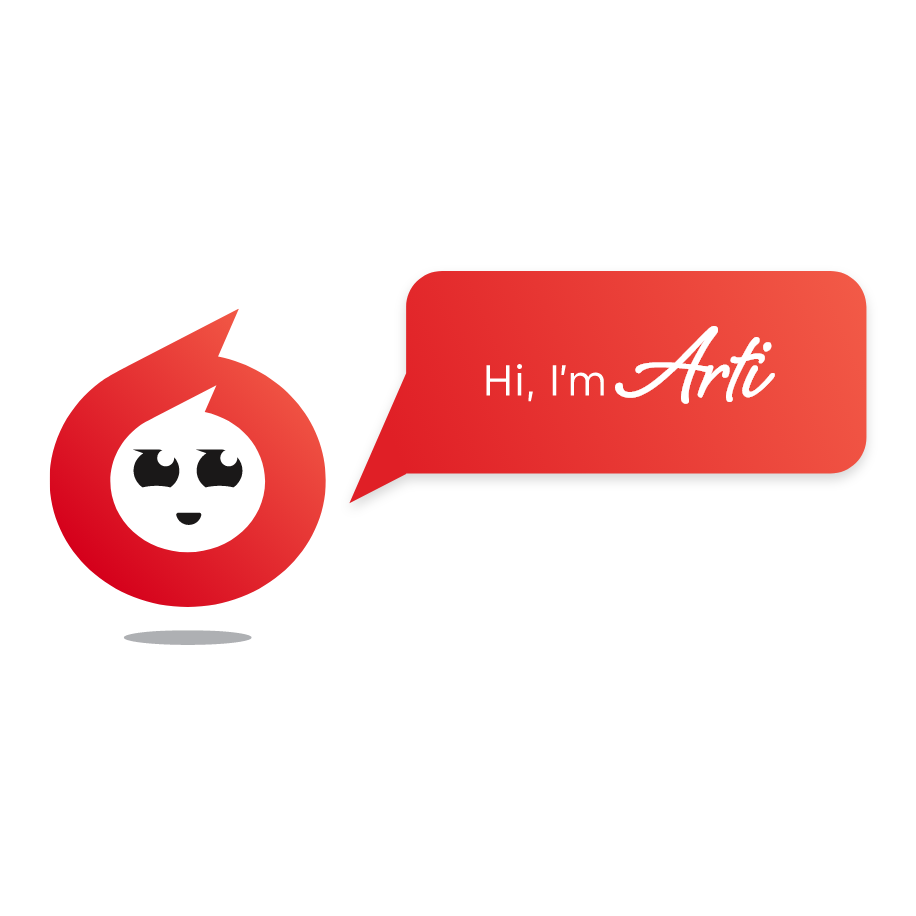
What Is The Future of Conversational AI Chatbots?
The adventure of conversational AI chatbots is just beginning. While the bots we have today are already impressive, the next ten years promise even more exciting developments.
Tailored Experiences
Future chatbots will go beyond simply answering your questions – they’ll anticipate them. By analysing user behaviour, preferences, and past interactions, they’ll provide personalised suggestions even before you think to ask.
Greater Emotional Intelligence
Researchers are working hard to make AI more sensitive to emotions. Imagine a chatbot that not only addresses your issues but also picks up on frustration in your tone and responds with empathy. That’s the path we’re heading down.
Voice-Driven Conversations
Typing is convenient, but speaking feels more natural. Voice-activated conversational AI chatbots are on the rise, making for faster and more intuitive interactions—especially in smart homes and cars.
Seamless Omnichannel Experience
In the future, you could start a conversation with a bot on your phone, continue it on your laptop, and finish it on your smart speaker—without losing any context. This kind of continuity will redefine convenience.
Enhanced Business uses
Beyond just customer service, businesses will leverage chatbots for HR, training, and project management. They’ll act as digital team members, streamlining processes and boosting productivity.
Ethical and Transparent AI
As chatbots become more capable, there will be a stronger focus on ethical issues. Expect future systems to clearly explain when you’re interacting with AI, how your data is used, and the reasoning behind certain responses.
Integration with Emerging Technologies
Conversational AI won’t exist in isolation. Look forward to chatbots working alongside augmented reality (AR), virtual reality (VR), and even Internet of Things (IoT) devices, creating rich, immersive experiences.
Futurist Ray Kurzweil once said: “Artificial Intelligence will reach human levels by around 2029.” While we’re not there yet, the progress of conversational AI chatbots shows we’re moving steadily in that direction.
For more insights and trends shaping the future of conversational AI chatbots, please see the Forbes Guide.
Frequently Asked Questions (FAQs)
- What is the difference between a conversational AI chatbot and a chatbot like Alexa or Siri?
A conversational AI chatbot is usually designed for specific tasks within a business, such as customer support or sales. On the other hand, virtual assistants like Alexa or Siri are more general-purpose tools meant for a wide range of uses across different devices and platforms.
- Can a conversational AI chatbot fully take over the role of a human agent?
Not entirely. While chatbots are great at handling repetitive and straightforward tasks, human agents are still crucial for dealing with complex, sensitive, or emotionally charged conversations. The best systems combine both AI and human interaction for optimal results.
- How long does it take to build a conversational AI chatbot?
The development timeline can vary quite a bit depending on the complexity of the chatbot. A simple one might take just a few weeks, while a more advanced system with integrations and customised training could take several months. Plus, regular updates are needed to keep it running smoothly.
- Are conversational AI chatbots safe for managing sensitive information?
Absolutely—if they're designed correctly. Security depends on factors like encryption, compliance with regulations such as GDPR, and careful data management. It's always best to choose platforms that prioritise privacy and security.
- How do companies choose the right conversational AI chatbot platform?
The right choice depends on various factors, including goals, budget, and specific use cases.
Conclusion
The rise of conversational AI chatbots marks an exciting shift in how we interact with technology. What began as simple scripts has evolved into advanced digital companions that understand context, respond naturally, and improve with every conversation.
These chatbots are transforming a variety of industries, from e-commerce to education, healthcare to finance, by providing instant support and reshaping customer expectations. Their advantages—24/7 availability, cost-effectiveness, scalability, and personalised experiences—make them vital for businesses of all sizes.
However, there are still hurdles to overcome, such as handling complex queries and ensuring data privacy. But with thoughtful design, thorough training, and ethical practices, conversational AI chatbots are proving to be real game-changers.
The key question isn’t whether businesses should embrace conversational AI, but how quickly they can get on board. Those who dive in now will set the standard, delivering customer experiences that are smooth, personalised, and future-ready.
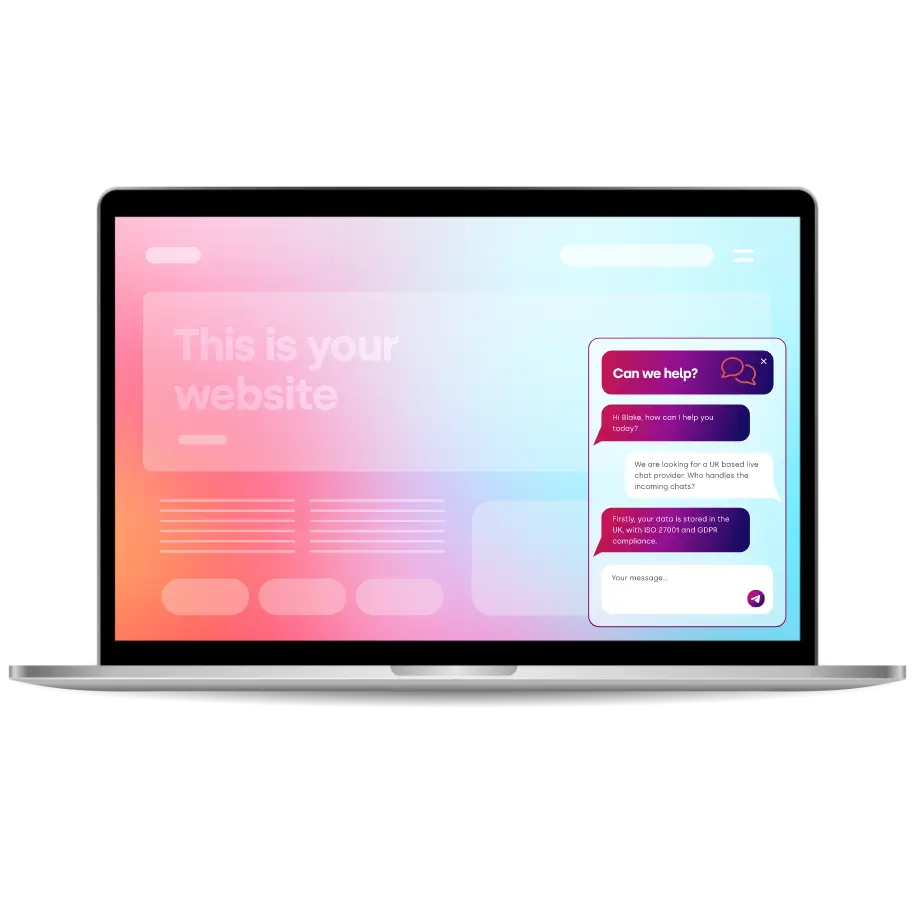
Thousands Trust Us. Will You?
From live chat to AI-powered chatbots and social integrations, Click4Assistance powers real-time engagement - fully UK hosted and trusted across industries.
